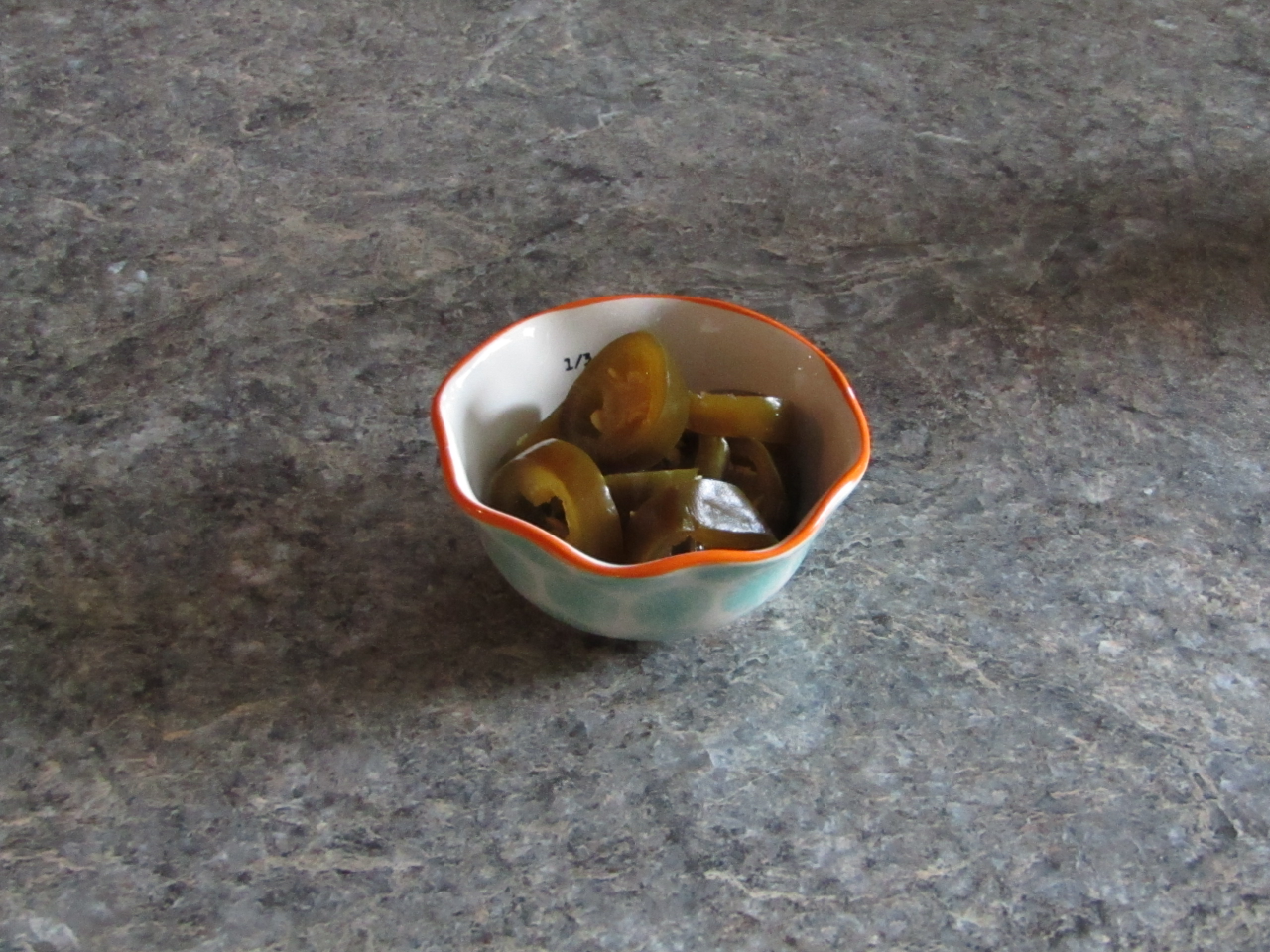This post contains affiliate links.
This is one of the most disheartening things which can happen. You have waited two weeks or longer to try the new hot pepper ferment and you open the jar to be greeted with the rotten smell of sulfur or compost. You see the green and yellow fuzzy growth all over the surface of the peppers and you realize something has seriously gone amiss.
When fermenting peppers it is important to prevent the exchange of oxygen in the container. Although there are other factors which affect the growth rate of mold in a pepper ferment, the only sure method of preventing mold growth is eliminating free oxygen in the container.
Fermented peppers will become moldy when they are exposed to oxygen for an extended period of time. Mold needs access to free oxygen for its respiration, growing rapidly when its ideal conditions for growth are met such as a warm, moist environment with access to carbohydrates and oxygen.
Why oxygen exchange is the primary reason for mold growth on peppers
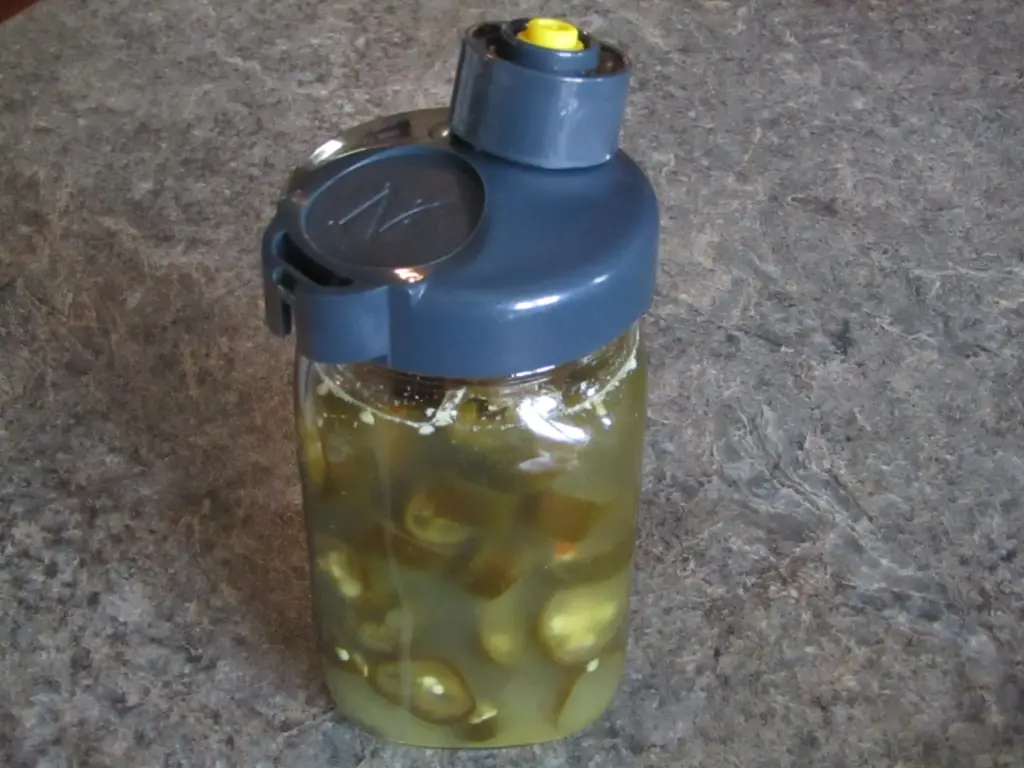
Mold is everywhere. It grows on every surface, in every environment and uses a wide variety of food sources. It can grow in salty solutions, humid or dry environments and hot and cold conditions. It is the ultimate recycling system being able to break down the long chain carbohydrates which makeup the structure of life but without oxygen it cannot do its job.
Mold is aerobic, meaning it needs oxygen to grow. Other factors like salt content, temperature and light exposure can inhibit the growth of mold but not stop it as there are many types of mold which can grow in all these conditions. It is only the elimination of free oxygen from the environment which will prevent mold growth.
Not enough salt to inhibit the growth of mold
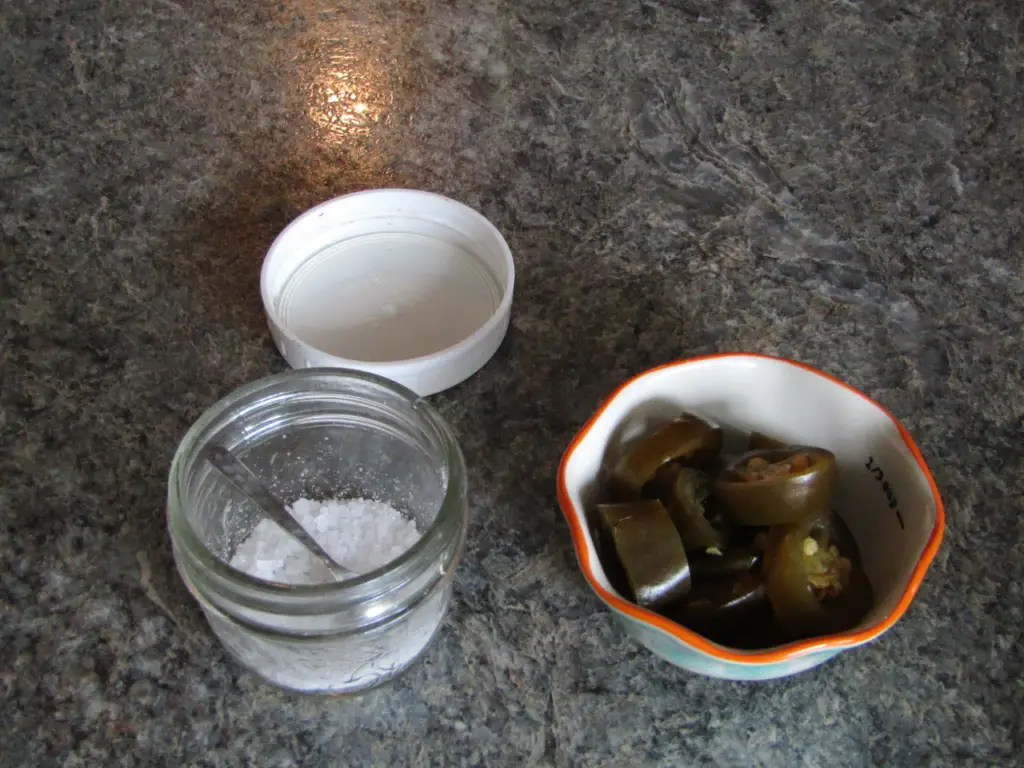
Salt has been used in food preservation throughout history. It has been found that when salt is added to food it will last much longer than otherwise. Therefore salt has been used to preserve all types of food from meat to fruit.
Salt makes some water unusable for the mold and damages the cell’s equilibrium when it enters the cell, causing cell death or energy depletion while the cell removes the salt. Reducing the mold’s ability to produce Mycotoxins, preventing off flavors.
Although salt is used in most lactic acid fermentations to control mold and other unwanted microorganisms it does not prevent all growth of mold. There are several families of mold which are salt tolerant which grow mostly in salt rich environments. The species Penicillium and Aspergillus are the most common which live in different environments. Although some of the species of these two families have beneficial uses such as medical and commercial uses some produce mycotoxins which are harmful.
Penicillium produces mycotoxins which are anti-bacterial, which is not something you want in a lacto-fermented vegetable as it will inhibit the growth of the lactic acid bacteria. Penicillium grows well in cool high moisture environments and is present almost everywhere.
Aspergillus also produces mycotoxins which can be harmful to human health. They inhibit the growth of other microorganisms by producing these mycotoxins which are meant to slow or stop the growth of other organisms competing for food. The species Aspergillus oryzae is used in the production of miso, sake and many other traditional Japanese foods but other most other species are harmful.
Improper fermentation temperature promotes mold growth
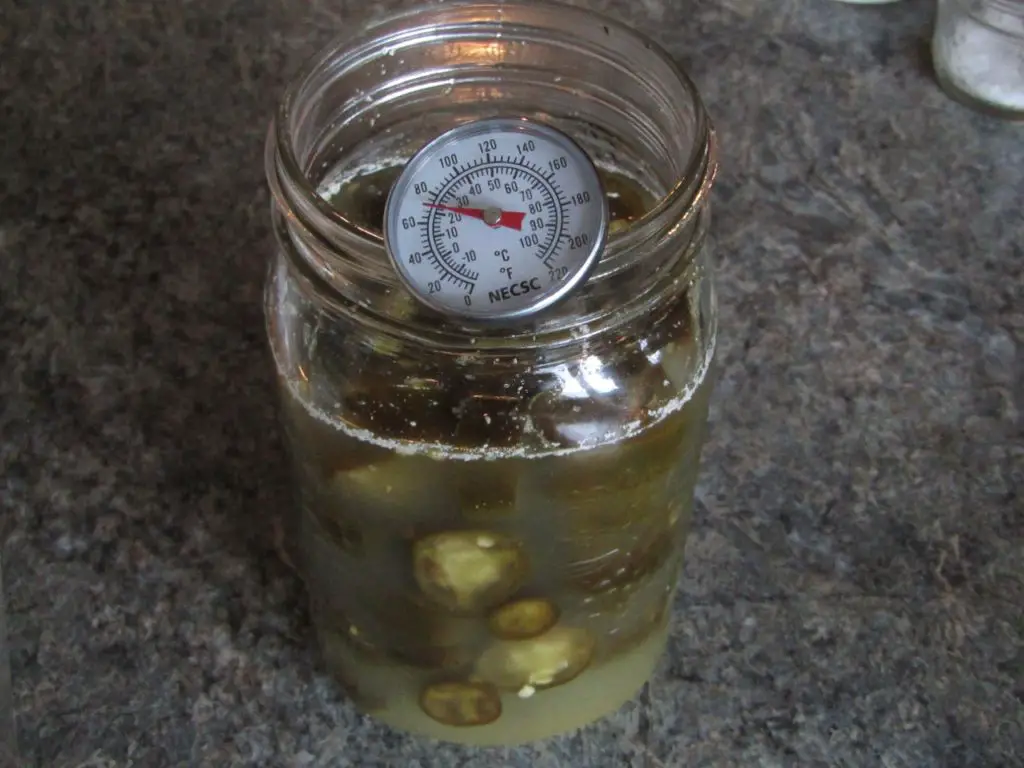
The refrigerator is the main tool we currently use to slow the growth of spoilage microorganisms. It has been found that microorganisms of all types grow slower in cool temperatures than in warm ones. This means not only are the spoilage bacteria slowed but also the lactic acid bacteria.
The cooler temperature lowers the activity of all microorganisms but it does not stop its growth. This leads to a longer storage time for two reasons.
- The spoilage bacteria produce fewer toxins and distasteful compounds which make the ferment inedible.
- The lactic acid bacteria are slowed preventing the fermentation from becoming overly acidic.
Temperature has been a method of controlling spoilage ever since refrigeration became popular and continues to be so but it is not a method where mold is prevented it is only a method where it is slowed. This is apparent everytime you clean your fridge and pitch all the green and growing leftovers found jammed in the back.
Using temperature to control mold growth is a two step process. The first step is to lower the pH of the peppers and produce exotoxins which prevent the growth of mold. To do this the temperature of the peppers needs to be kept in the optimal growth range for lactic acid bacteria (60-75℉ or 15-24℃).
Once the lactic acid bacteria have lowered the pH to 4.5 or so there is sufficient acid to prevent most spoilage bacteria and mold from dominating the peppers but to insure the peppers are protected from mold growth leave the peppers to ferment at least a month. The long fermentation time will allow the lactic acid bacteria to produce enough of the compounds it uses to prevent mold growth for long term storage.
After a month of fermentation, place the peppers in a cool location such as the fridge for use. You can store your fermented peppers in a sealed container for months to years depending on storage temperature, effectiveness of the seal and light exposure but once they are opened they will be exposed to oxygen and possibly be subject to mold growth. The cool temperature in the refrigerator slows any mold growth preventing spoilage.
Light exposure slows the growth of mold
Electromagnetic energy is lethal to organic life. Without the absorbing effect of our atmosphere life could not exist. The danger comes from the ultraviolet frequencies which are on the fast side of the scale of the electromagnetic energy scale.
When mold is exposed to ultraviolet light the energy transferred into the medium damages the cells delicate connections which prevents its ability to survive. When mold is exposed to a high concentration of ultraviolet light it destroys a high percentage of the microorganisms in the medium.
Light exposure is indiscriminate to what it destroys. It kills small cells of all types whether they are mold, bacteria, yeast or even animal skin cells. This means that it is not a useful method of controlling the growth of mold in a fermentation. For a successful fermentation you want to target organisms which produce the outcome you want. By using a controlling mechanism which destroys all cells no microorganism can get the upper hand.
Instead you need to use methods which hinder the growth of mold and encourage the growth of lactic acid bacteria. Methods such as excluding oxygen flow, addition of salt and maintaining optimal temperature for growth.
Contaminated utensils

When serving peppers it is important to use clean utensils as the introduction of dirt or food particles will contain mold spores. With the availability of oxygen from opening the container to serve the mold will have access to carbohydrates which the peppers cannot digest and oxygen. This leads to mold growth and an off flavor or outright spoilage of the peppers.
Moldy ingredients
Like many other preservation systems it is best to start with the freshest and best quality product. Sometimes people use fermentation to store peppers which have passed their best before date. When peppers have mold spots or obvious signs of decay it is risky to just cut the spots off and use them in a ferment. In such cases the mold may be able to dominate the fermentation for a week or so producing the off flavors and slowing the growth of the lactic acid bacteria and producing to off flavors.
Using dirty fermentation containers
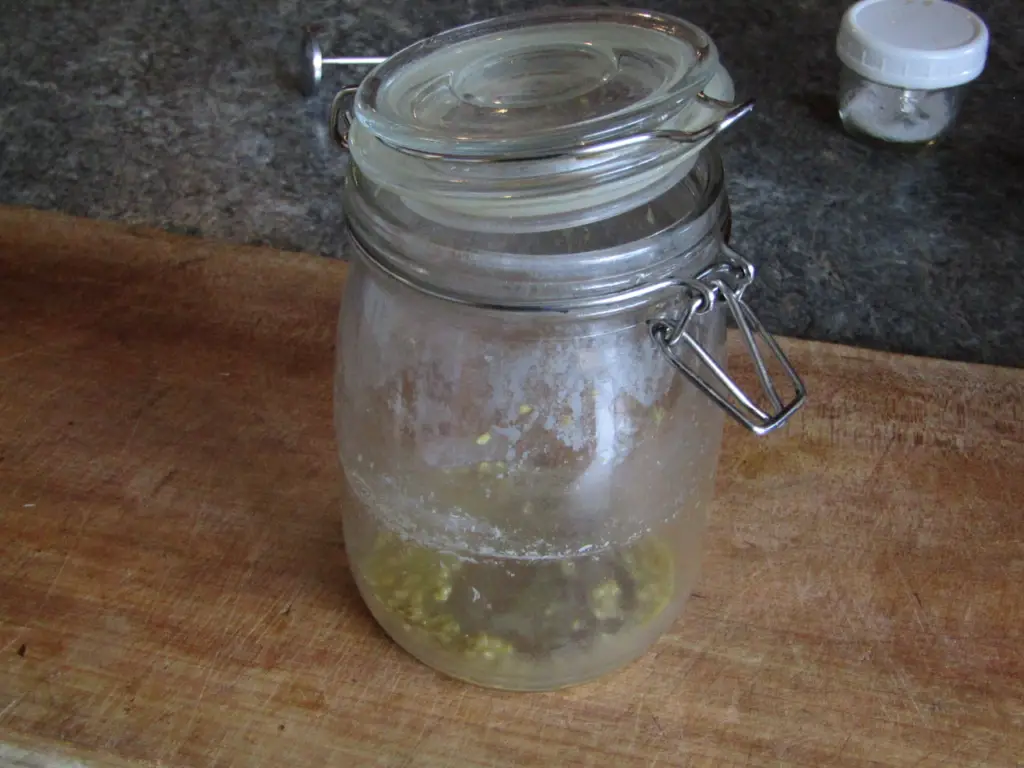
When fermenting it is not necessary to sanitize your equipment but it is important to clean it with hot running water and leave it to air dry. If containers have bits of food or dirt on them mold will be present at the beginning of the ferment which leads to off flavors. Since mold can grow on any surface when it has access to oxygen and even small amounts of carbohydrates it is important to wash your containers just prior to fermenting your peppers in them.
Using damaged fermentation containers
Mold loves to grow in warm moist places where it has access to oxygen and food energy. Such places are easy to find if the container you are using to ferment your peppers is damaged in any way.
If your ceramic container has a small crack in it, it may not go all the way through and therefore may not leak but it does provide an environment for mold to inhabit. The porous nature of the ceramic can provide enough oxygen for growth.
Scratches in plastic containers are also great places for mold to grow in. the scratch can trap food particles providing the food for the mold which will grow while the container is not being used. Such containers are hard to clean and often mold and its exotoxins will remain in the container after washing.
Glass containers with chipped tops or damaged seals
Glass containers are some of the best and most available fermentation containers for fermentation but if they have chips on the top of the container oxygen will be able to enter the container and cause mold growth.
Damaged seals are another way oxygen can get into a glass container. If you are using resealable containers be sure to test the seal prior to fermenting with it. Inspect it carefully for any damage caused by handling, rust or age and discard any with signs of wear.

